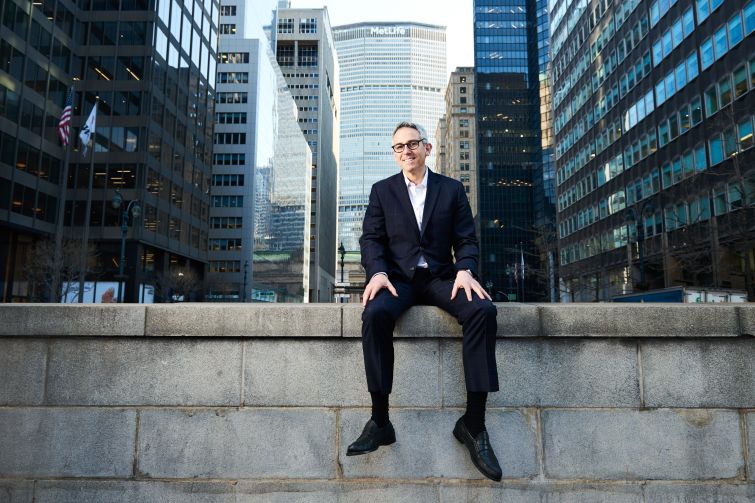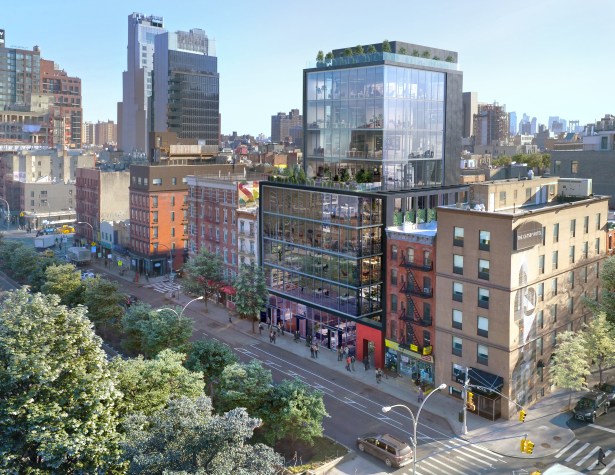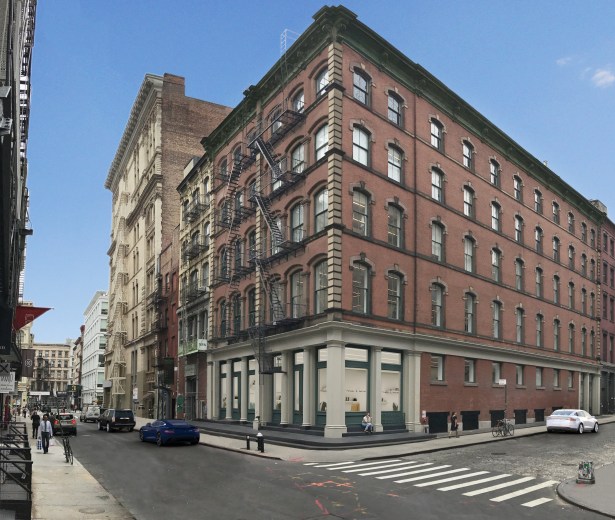As Sun Sets on Sunshine Cinema, Gregory Kraut Is Ready for Its Next Iteration
By Lauren Elkies Schram March 21, 2018 9:00 am
reprints
Gregory Kraut, a managing partner at K Property Group, is paring down—personally and professionally.
The 42-year-old has cut out animal products including eggs and dairy; he has stopped drinking and watching TV and he’s added meditation to his daily diet. At work, he and partner Rod Kritsberg are a two-man outfit that has reduced its overhead by working out of a free office, having a CFO on retainer and employing an analyst that is an independent contractor.
“I’ve built companies before and what kills companies is overhead,” Kraut told Commercial Observer last week. “I’d rather work an extra five or six hours a week than strap the company with another person we’d use maybe 50 percent of the time.”
Since the real estate investment platform’s founding in January 2017 (Kritsberg started the firm alone in 2014 as another iteration called Kritsberg Property Group), Kraut and Kritsberg have been focused on purchasing smaller commercial buildings. K Property Group has three buildings in its portfolio—30-32 Howard Street in Soho (purchased with Intercontinental Real Estate for $46 million in January), Sunshine Cinema at 141 East Houston Street on the Lower East Side (purchased last May with East End Capital for $31.5 million) and 211 East 43rd Street in Midtown (a building in which Kritsberg already had an ownership stake).
Not only do they buy properties, K Property Group does asset management, leasing and construction management. Kraut, who was a principal and managing director for Avison Young in the tri-state area, brings to the table expertise in “leasing, operations, company building and relationships,” he said. Kritsberg, who worked at Midtown Equities, “has the acquisitions, debt, equity and retail experience,” Kraut added.
A graduate of George Washington University, Kraut lives in Westport, Conn., with his wife and sons, 5 and 8. When not working, Kraut is an active member of his town’s legislative body, the Representative Town Meeting (RTM). (He has a whole website, gregkraut.com, dedicated to his positions.)
CO met with Kraut in his office on the second floor of a residential building at 80 Park Avenue between East 38th and East 39th Streets to talk about a new fund the company has launched, plans for the firm’s assets and how the firm came to have such a prestigious board of advisers.
Commercial Observer: Why is your office here?
Gregory Kraut: We officially came together about a year ago. We wanted to find a place that was close to Grand Central [Terminal], because I live in Westport [Conn.] and my partner [Kritsberg] is in Tribeca. We didn’t want to go to like a Regus or a WeWork (WE) because we just thought it was a little too amateurish for lack of a better word. A partner of ours [Envirochrome] offered to house us. They had the space. It’s free. We’re looking for space now but that’s because we’re in a growth phase.
Is it just you and Rod?
Yes. But we also have an analyst. He’s offsite. And we also have a CFO. We have a model that’s called a hub-and-spoke model. So basically what we do is we third-party most of the services. We believe that you run a lean and mean company and you make more money for your investors.
Is it just going to stay the two of you in-house?
That’s a good question. Our goal is to buy two or three office buildings a year—and we did two [in 2017] with Sunshine and 30-32 Howard Street. We’re known for our sourcing of deals and leasing. We’re very good at managing the asset so for us as long as you can do that, you can find a deal in New York, you could lease it up and you have the ability to actually get the financing, which we do. Once we buy another two buildings, then we’ll probably bring on board a head of construction and asset management. That’s our plan.
When you were at Avison Young you were leasing 211 East 43rd Street. Is that a property you now own?
We’re part of the ownership of that building. I brought that building into Avison Young as a broker. Rod Kritsberg was part of the ownership group. He had his own company. He was running acquisitions at Midtown Equities for the Cayre family. He left Midtown Equities to start his own company [Kritsberg Property Group]. [With] 211 East 43rd Street, Rod is part of the ownership group. There are other owners in that as well. There’s Alchemy-ABR Investment Partners and Clarion.
What’s your market thesis?
We don’t just invest in New York. It’s not even submarket by submarket: It’s really a block-by-block, building-by-building acquisition analysis that we do. We target companies that are a little smaller, let’s just say—the companies that graduate WeWork to about 10,000 square feet. So we look at buildings that have smaller floor plates, higher ceilings, really good light, in supply-constrained areas. I’m the guy that does the midmarket companies. That’s what my specialty’s always been.
Every building is a different thesis. I’ll give you an example, 30 Howard Street is going to be what we think is going to be the coolest building in New York City hands down, bar none. [It’s at] Howard Street and Crosby [Street]. I think it’s where Soho was 10 years ago. It’s where the tenants want to be. They want to be off of Broadway in terms of the office space. They want to be on side streets. All the mall brands like LVMH and Gucci are all sort of north and the west side of Broadway in Soho while all the cooler tenants are going south and east. It’s really going toward the Lower East Side. We really love that market.
What’s the status of 30 Howard Street?
We hired HBA and Spector Group. One is for form and one is for function. We’re popping up a penthouse. So it will be five stories plus a penthouse, so six. We’re combining two buildings [at 30-32 Howard Street], 42,000 square feet.

When are you starting construction?
Right now. We’re starting some of the shoring. We’re redoing the lobby, we’re redoing the elevators. We’re actually putting another elevator in. It’s going to be a spectacular building.
Why did you want the Sunshine Cinema building?
Because we saw where retail is going. We saw what was happening on Orchard Street where they have Equinox, CVS and T.J. Maxx, and Whole Foods was on the other side so we’re right there. We’re like, Are you kidding? This is a great location. We’re putting up a spec 63,000-square-foot office building that’s going to be nine stories. Roger Ferris is our architect. He is awesome.
So no theater there.
No theater. Zero. We’re demolishing it in two months.
You don’t feel bad?
No, not at all. First of all they were trying for years to make money and they couldn’t. The area has changed, and quite frankly, the business model didn’t, and so we gave them options to renew. They had several opportunities to buy the building.
What kind of rents are you going to seek?
Probably be at somewhere right under $100 a square foot more or less. 300 Lafayette is that brand new building that’s being built. They think they’re going to get $150 a foot. We think we’re going to have a better product than them, and we’re going to be 80 percent of the cost, meaning we’re going to be at a lower price point and a better product in a cooler area.
People now want technologically advanced buildings as well. What’s happening is Midtown South is now more of a prime area. Five or 10 years ago it was Midtown and then Midtown South was a cool area but didn’t have the kind of quality buildings. But now people from Midtown are really coming to Midtown South. What that means is they’re expecting an institutional-quality level of owner and quality-level buildings. But that’s not what the makeup is.
What size buildings do you like?
Between I would say 40,000 and 150,0000. Our sweet spot is really 75,000 to 100,000, kind of like what SL Green was 20 years ago. They started out buying those—that was their special sauce and they just built it into a behemoth and now they have to buy these huge buildings. We want to stay at this size. We think that the smaller tenants have more attractive yields. They’ve always had a much higher occupancy rate. If you treat them right, they’re sticky—they don’t want to leave. They don’t have a head of real estate, they just want great service, they want expediency on things, they want ease of use, and they want their employees to be happy.
Will you always joint venture with someone?
Always. That’s our model.
Anything else you are up to?
I can tell you we have a fund now. Most people don’t know this.
When did you launch it?
In January. Our first money that we deployed was 30 Howard.

How much did you deploy from it?
I can’t get into the specifics. All I can tell you is it’s a GP [general partner] fund. [With it] we’re looking to buy about a billion dollars of assets over the next three years, both in retail and office. We think retail has hit its trough.
Why did you launch it?
The first reason is we needed the capital. And we’re not set up to raise friends and family. We just don’t do that. And so most of our LPs [limited partners] are institutional so we wanted to bring in a more institutional base to our business and there’s only so much money. Rod and I didn’t come from any money. We’re like, we have to do something because we were seeing all these good deals, which we still do, and we only have so much money. Number two, because we wanted to institutionalize our business. And we wanted to make sure that people knew we had the money.
How much money is in the fund?
I can tell you we have enough money where we could deploy and buy, let’s just say, about $500 million worth of assets as of right now.
Who’s invested in your fund?
I can tell you we have one of the largest public pension plans and a large fund of funds. We’re considered an emerging manager… You can sort of look at our board and figure out who [has invested]…and our board is really important to us. I think our advisers are really part of our special sauce.
How’d you pick the board members?
For Howard Stern [the founder and principal of Stern & Associates] I met him on a panel several years ago. He started a private equity fund that merged into a public REIT called Hudson Pacific Properties. So he has private and public REIT experience and value-add office play in L.A., very similar to how we’re starting up here. Robert Lapidus [the president and CIO of L&L Holding Company] one of the top developers, him and [partner] David Levinson came together similar to how myself and Rod came together. David was a broker at CBRE (CBRE), where I was as well. Rob was an acquisitions guy. They came together to form L&L.
What does he bring to you?
Just knowledge. Like everything, questions I have about setting up a company, about limited partners, about how to do this, this and this, I call him, I ask him questions, do you know somebody there, do you know somebody here, about construction, about finance, about if you have a relationship with this bank. The guy’s awesome. Strauss Zelnik [the founder of Zelnick Media and CEO of Take-Two]—I wanted somebody who comes from the tech world of things. He’s probably one of the top media execs in the world. He’s just a very good friend of mine. He has experience growing companies. And he knows sort of what the TAMI companies, the millennials, want. He knows how to build companies. And then Simon Ziff [the president of Ackman-Ziff], I call him the “Pied Piper of Manhattan.” He knows everybody, legitimately knows everybody. Any kind of question on debt he’s our guy.
Why’d you leave the world of brokerage to become a developer?
Because I’ve always, since I was a young kid, wanted to buy New York City office buildings—always. Literally I used to come into the city [from Roseland, N.J.] and look at buildings and I just always knew. I loved looking up. My favorite site on both sides is looking at the MetLife Building. I used to walk around with my head up on Sixth Avenue—like the size and the magnitude, I just loved it. And I always had a creative streak in me as well and I kind of had this thought process of really making the commercial building into the next generation of catering to more of the millennial generation. I also had this feeling like I have a little bit more to offer and I wanted to build real wealth and I think that at the end of the day, it was something like leaving a legacy to my kids and leaving a mark on Manhattan. I did it with brokerage firms, I built Avison Young—I was the managing director of the tri-state. We bought Walsh Company, which is the largest project management firm in New Jersey. And a valuation company, Great American Realty. Now it’s a $100 million run rate type of business. To go back to your question, I wanted to do it with buildings.
Any other reasons for leaving brokerage?
All the starts aligned for me to do this. The relationships I made and the pipeline I put together.
How long have you been on the Westport RTM?
Less than a year. I ran against eight people and won by the most amount of votes I think in the last 10 years or something like that. I won by an 18 percent margin. I just moved there two years ago. This is a place where I wanted to set down my roots. I love the town, and I love the people, and I’ve always had an interest in helping others, and I think my background in finance and real estate and quite frankly, in politics [is helpful]. I worked on the Hill for some time with a moderate Republican from New Jersey, Rodney Frelinghuysen, as an intern, and my mother ran for City Council. She was like the first woman to do that. She lost by four votes. I learned a lot about the process, and I’ve always been interested in it.
How much time do you commit to this work?
There are three things I do: It starts with family, fund and town, basically. I don’t watch TV anymore. I work probably 15 hours a day.
What time do you get up?
Five-thirty. I go to bed at 12. I’m very structured. I’m a vegan. I feel great. I don’t drink anymore. At the end of the day you just try to optimize your being. I’m a firm believer—there’s not enough volunteering in the community and there’s not enough people that think they can make a difference, and so I’m a very big believer in volunteerism. I think it’s a lost art in some respect. At a local town level, I’m pro-environment, I’m very pro-historic preservation. I try to help out as much as I can with the budget.
Health wise, the most recent change you made was going vegan six months ago. Why?
Because I could.
You still drink caffeine I see from your vat of iced coffee. You going to give that up, too?
I don’t know. I’m not sure. It makes me focused, and I probably have a little A.D.D., and it keeps me [on point].


